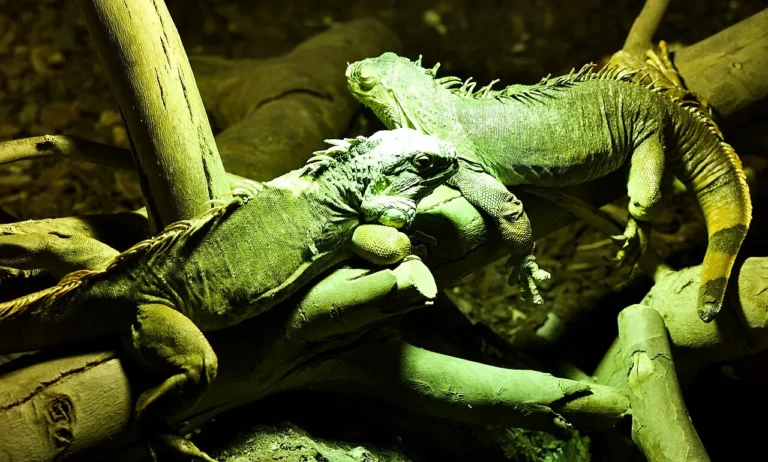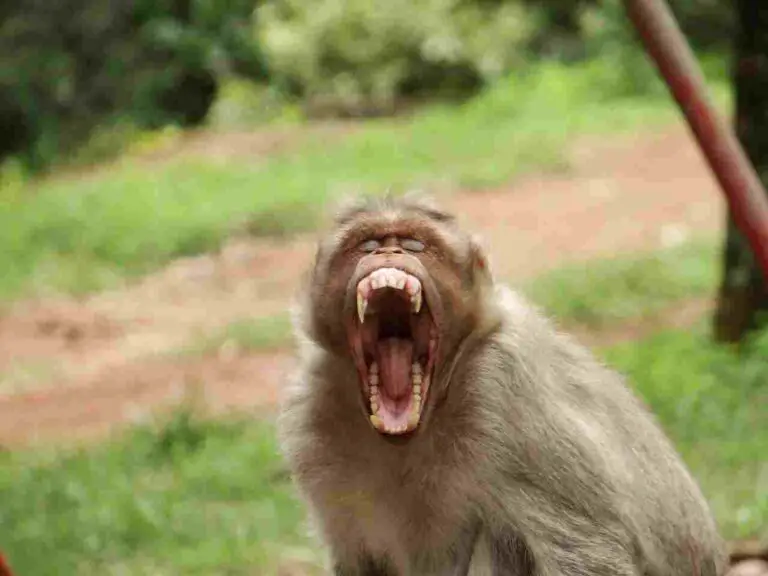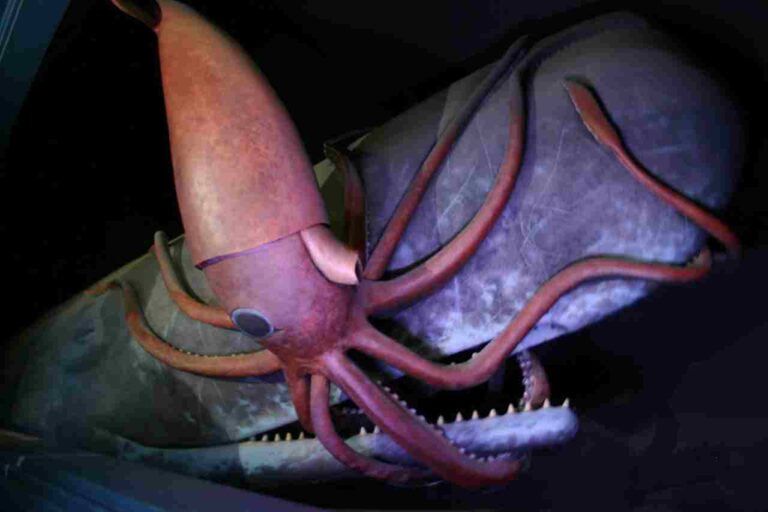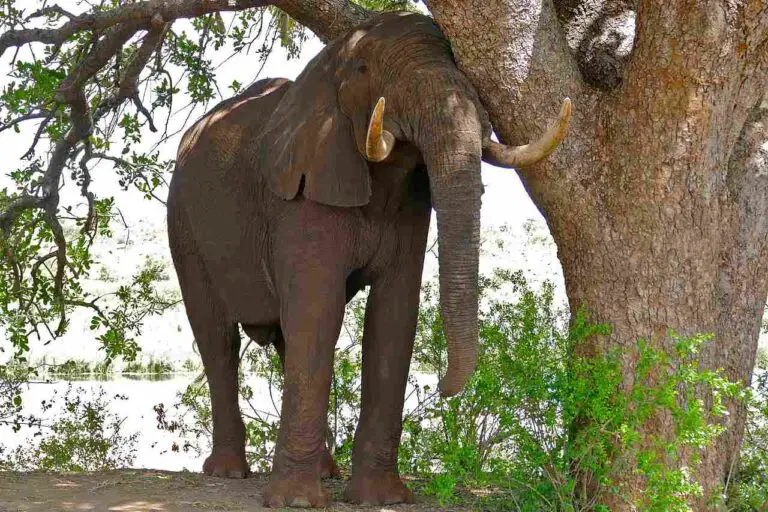Green Rat Snake Facts, Description, Characteristics
The green rat snake (Pantherophis obsoletus) is a non-venomous reptile found across North America. It plays a vital role in ecosystems by controlling rodent populations and maintaining ecological balance. Understanding its biology, behavior, and habitat preferences is crucial for effective conservation and management strategies. While facing threats such as habitat loss, responsible pet ownership and conservation efforts can help ensure the long-term survival of this species.
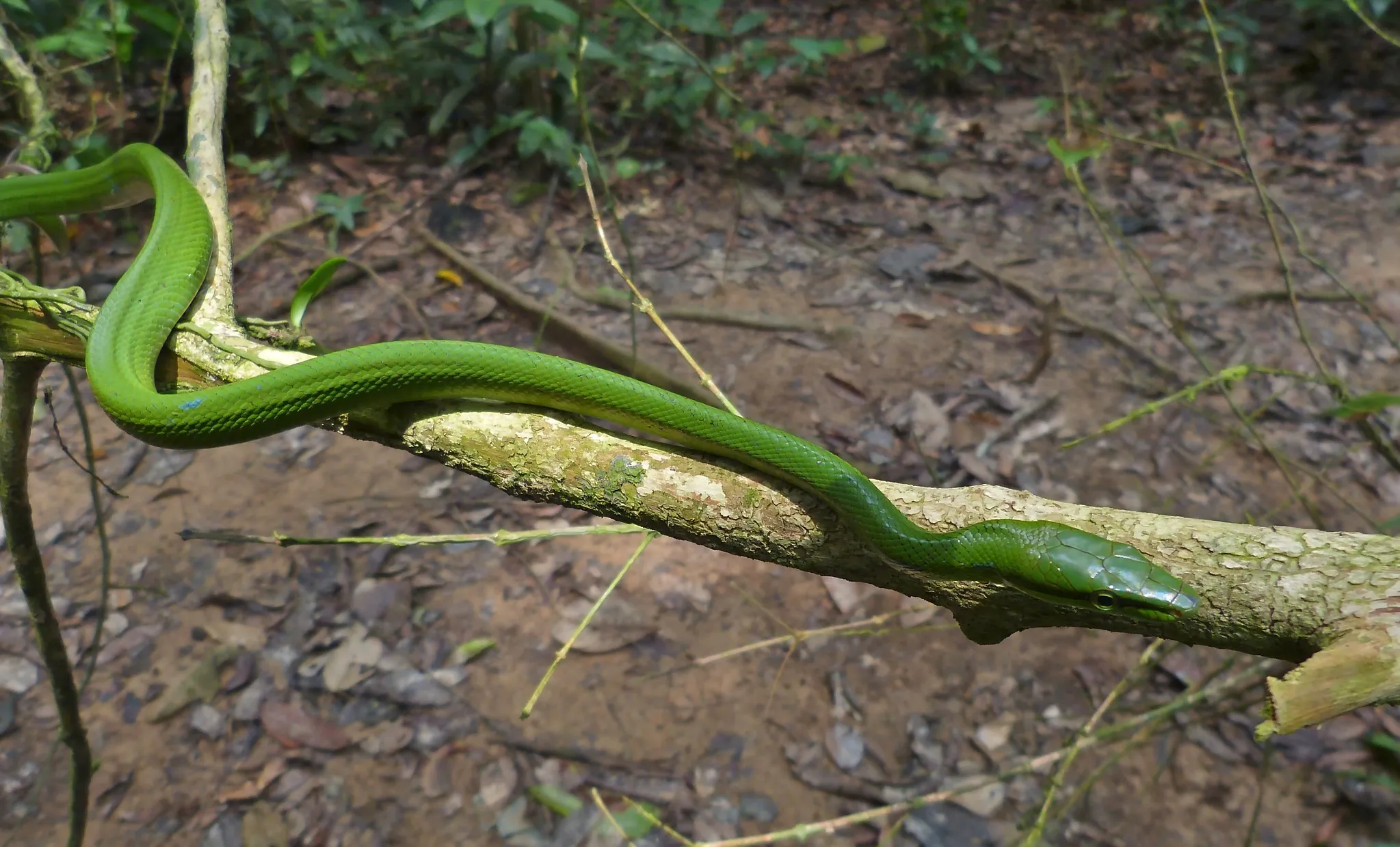
*Facts About The Green Rat Snake
- The green rat snake is non-venomous and poses no threat to humans.
- It primarily feeds on rodents like rats and mice.
- Green rat snakes are typically 3 to 6 feet long and weigh between 1 to 3 pounds.
- Their vibrant green coloration helps them blend into forested habitats.
- They have numerous teeth for gripping and subduing prey.
- Green rat snakes lay eggs to reproduce and typically mate in the spring.
- These snakes are diurnal and can be found in forests, grasslands, and swamps.
- Their tracks are characterized by imprints of belly scales.
- Green rat snakes live in North America, from the southeastern United States to parts of Mexico.
| Criteria | Summary |
| Scientific Classification |
Pantherophis obsoletus, with subspecies including quadrivittatus, rossalleni, and spiloides.
|
| Subspecies |
Distinct variations with geographic ranges and color variations, important for conservation.
|
| Size and Weight |
Typically 3-6 feet long, 1-3 pounds in weight, influencing ecological role and habitat needs.
|
| Appearance and Identification |
Vibrant green coloration, slender body, aiding in camouflage and species identification.
|
| Dentition and Bite Force |
Non-venomous, sharp teeth for prey subduing, influencing prey populations and interactions.
|
| Venomous Potency |
Non-venomous, relying on constriction, effective rodent predators without human threat.
|
| Diet |
Primarily rodents, also birds, lizards, and frogs, contributing to pest control and ecosystem balance.
|
| Behavior |
Diurnal, arboreal, solitary except breeding, influencing spatial ecology and interactions.
|
| Sounds/Vocalization |
Generally silent, defensive hissing and tail vibrations deter predators, minimizing risk.
|
| Habitat |
Found in forests, swamps, grasslands, adaptable to various environments, contributing to ecosystem diversity.
|
| Geographic Range and Distribution |
Native to North America, from southeastern US to Mexico, significant across ecosystems.
|
| Tracks |
Leave distinct belly scale imprints, aiding in population studies and habitat assessments.
|
| Reproduction |
Oviparous, laying eggs in concealed locations, ensuring population continuity and balance.
|
| Lifespan |
Average 10-15 years, influencing population dynamics and conservation needs.
|
| Major Adaptations |
Cryptic coloration, agile climbing, and constriction techniques enhance predation efficiency.
|
| Conservation Status |
Varied status, facing threats like habitat loss, conservation measures ensure role preservation.
|
| Domestication and Suitability as a Pet |
Not typically domesticated, but kept with care, minimizing risks to ecosystems.
|
1. Scientific Classification:
Kingdom: Animalia
Phylum: Chordata
Class: Reptilia
Order: Squamata
Family: Colubridae
Genus: Pantherophis
Species: Pantherophis obsoletus
Subspecies:
Pantherophis obsoletus quadrivittatus (Yellow rat snake)
Pantherophis obsoletus rossalleni (Everglades rat snake)
Pantherophis obsoletus spiloides (Gray rat snake)
2. Subspecies:
Details: The green rat snake, Pantherophis obsoletus, has several subspecies, including P. o. quadrivittatus, P. o. rossalleni, and P. o. spiloides, each with distinct geographic ranges and color variations.
Importance: Understanding subspecies helps in conservation efforts by recognizing unique populations and tailoring conservation strategies to their specific needs.
Ecological Implications: Subspecies variation may reflect adaptations to local environmental conditions, making them valuable indicators of ecological diversity and ecosystem health.
3. Size and Weight:
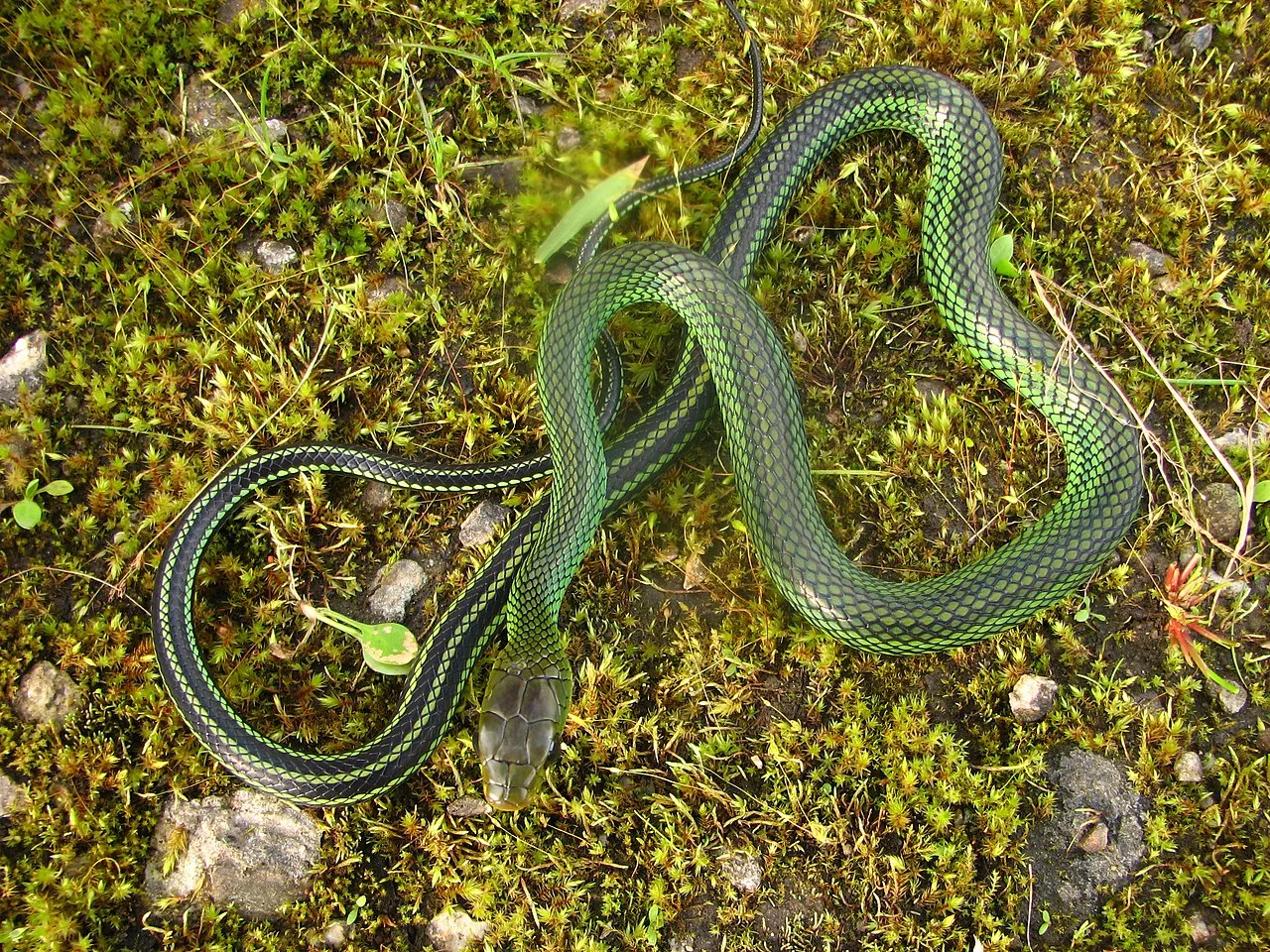
Details: Green rat snakes typically range from 3 to 6 feet in length, with some individuals reaching lengths of up to 7 feet. They are relatively slender snakes, with adults weighing between 1 to 3 pounds.
Importance: Knowledge of size and weight helps in understanding the snake’s ecological role, predator-prey relationships, and habitat requirements.
Ecological Implications: As predators, green rat snakes play a crucial role in controlling rodent populations, which helps maintain the balance of ecosystems they inhabit.
4. Appearance and Identification:
Details: Green rat snakes are named for their vibrant green coloration, which can vary from bright emerald to olive green. They have a slender body, smooth scales, and a white or yellow underside. Juveniles may display darker blotches or stripes.
Importance: Understanding their appearance aids in species identification, research, and monitoring efforts.
Ecological Implications: Their green coloration provides camouflage in forested habitats, aiding in predator avoidance and enhancing their hunting success.
5. Dentition and Bite Force:
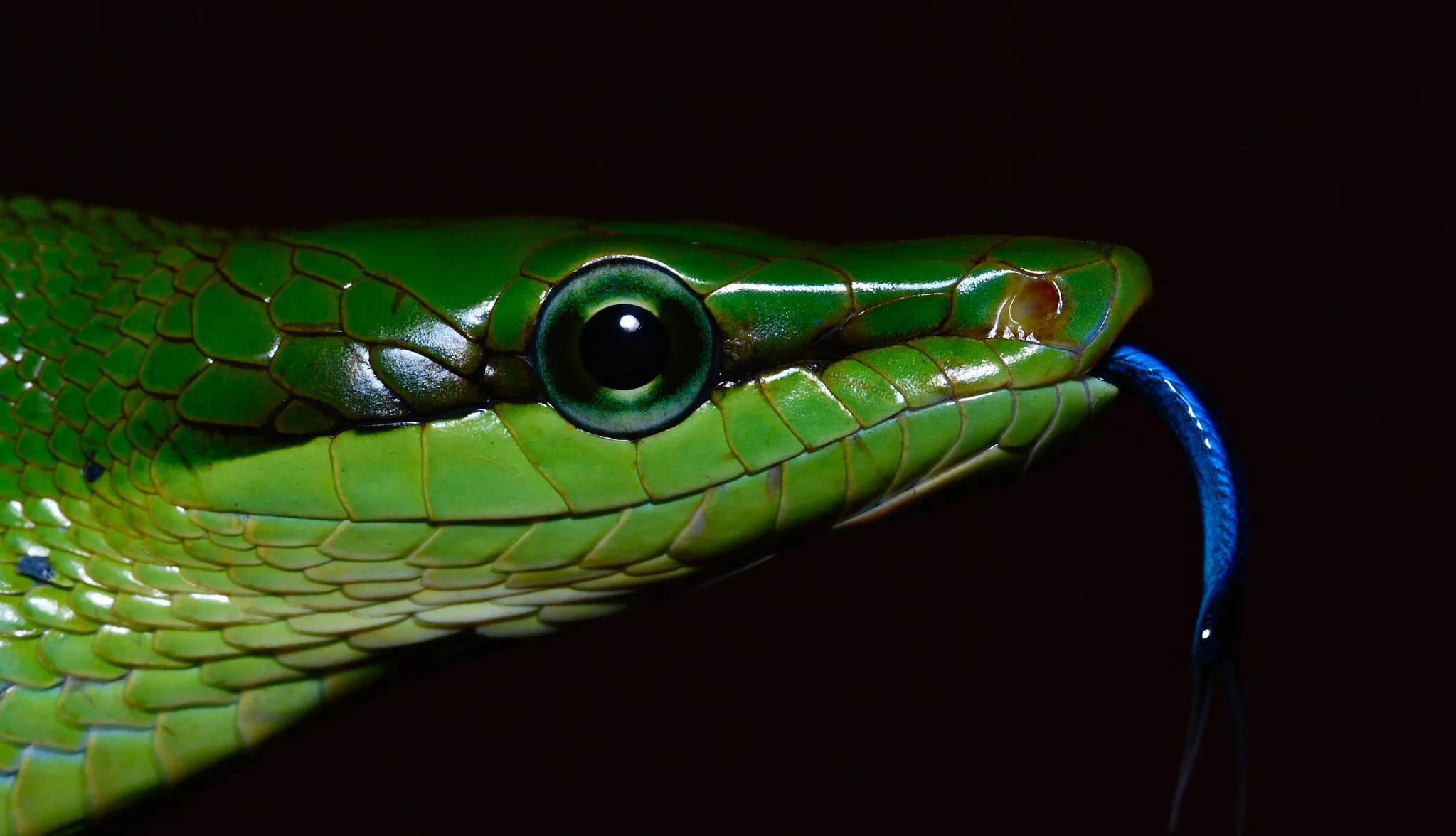
Details: Green rat snakes have numerous teeth arranged in rows along their upper and lower jaws. While non-venomous, their bite can still cause minor injury due to their sharp teeth.
Importance: Knowing about their dentition helps in understanding their feeding behavior and interactions with prey.
Ecological Implications: Their bite force is sufficient to subdue prey, contributing to their role as effective rodent predators and influencing prey populations within their ecosystems.
6. Venomous Potency:
Details: Green rat snakes are non-venomous and pose no threat to humans. They subdue prey by constriction rather than injecting venom.
Importance: Recognizing their lack of venomous potency ensures accurate risk assessment and proper handling protocols.
Ecological Implications: As non-venomous predators, green rat snakes contribute to pest control in agricultural and natural ecosystems without posing a danger to humans or other animals.
7. Diet:
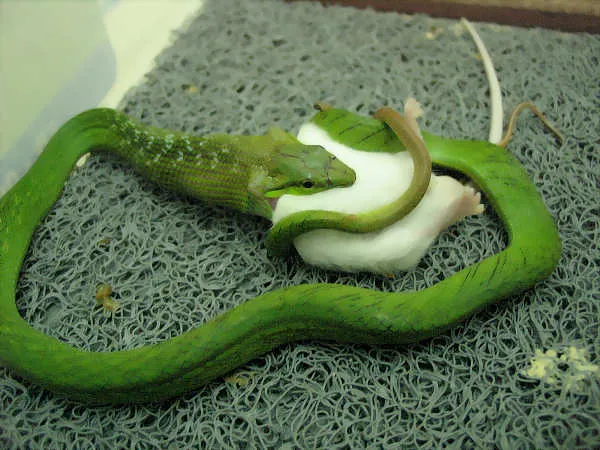
Details: Green rat snakes primarily feed on rodents such as rats and mice. They may also consume small birds, bird eggs, lizards, and frogs.
Importance: Understanding their diet helps in assessing their role in ecosystems and their potential impact on prey populations.
Ecological Implications: By preying on rodents, green rat snakes help regulate their populations, which can prevent outbreaks of rodent-borne diseases and reduce agricultural damage caused by rodents.
8. Behavior:
Details: Green rat snakes are primarily diurnal and arboreal, though they may also be found on the ground. They are solitary except during the breeding season.
Importance: Knowledge of their behavior aids in their conservation, management, and interaction with humans.
Ecological Implications: Their diurnal activity pattern and arboreal habits influence their interactions with prey, predators, and their environment, shaping their role within ecosystems.
9. Sounds/Vocalization:
Details: Green rat snakes are generally silent, although they may hiss or vibrate their tails when threatened to deter predators.
Importance: Understanding their vocalizations helps in communication studies and behavioral research.
Ecological Implications: While not vocal in the traditional sense, their hissing and tail vibrations serve as defensive mechanisms, deterring potential predators and minimizing predation risk.
10. Habitat:
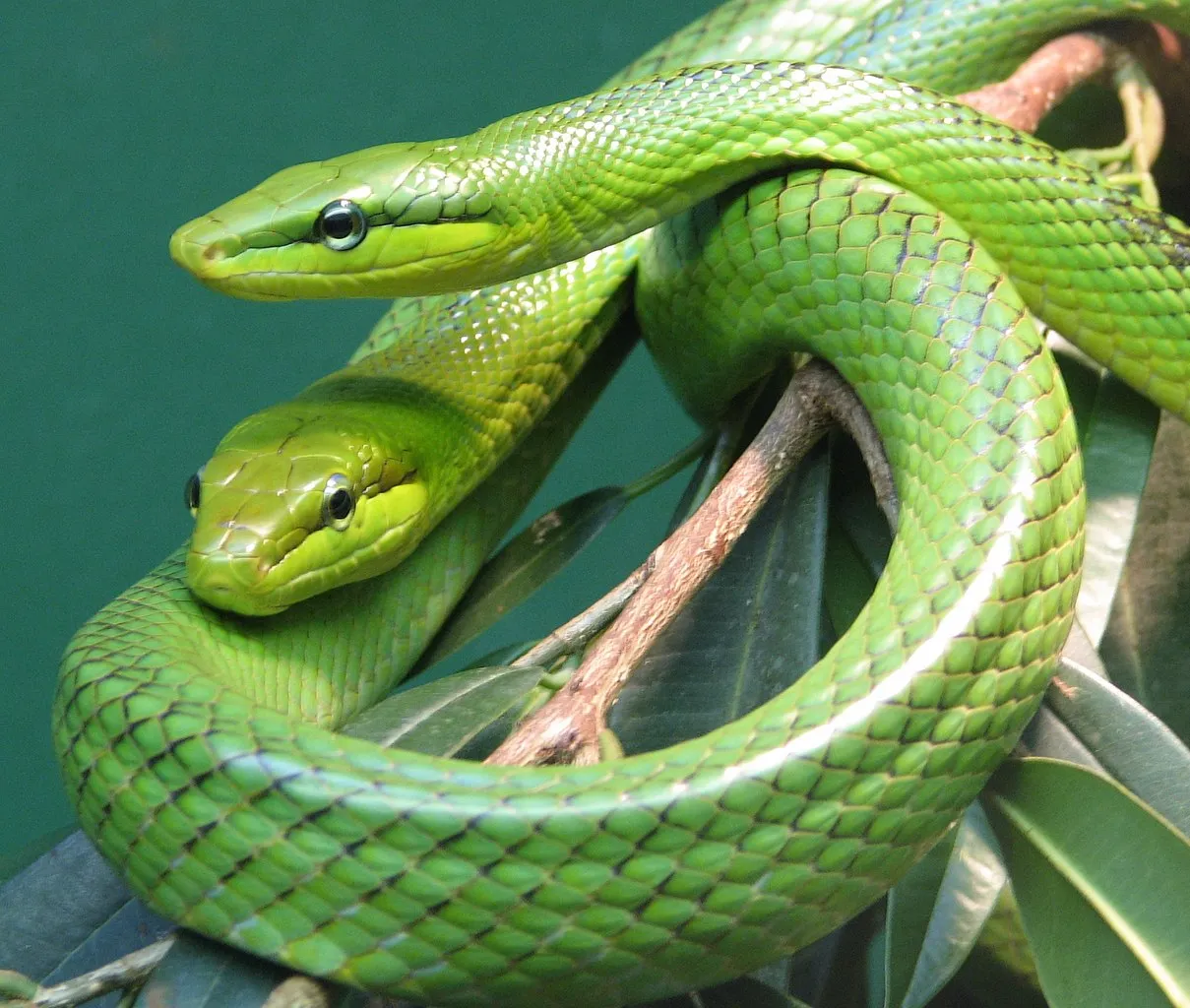
Details: Green rat snakes inhabit a variety of habitats, including forests, woodlands, grasslands, swamps, and agricultural areas. They are commonly found near water sources.
Importance: Knowledge of their habitat preferences is essential for conservation efforts and habitat management.
Ecological Implications: Their ability to adapt to various habitats allows green rat snakes to occupy diverse ecological niches, contributing to ecosystem diversity and functioning.
11. Geographic Range and Distribution:
Details: Green rat snakes are native to North America, with a range extending from the southeastern United States to parts of Mexico.
Importance: Understanding their distribution helps in conservation planning, monitoring, and managing populations.
Ecological Implications: Their widespread distribution reflects their adaptability to diverse environments and highlights their ecological significance across different ecosystems within their range.
12. Tracks:
Details: Green rat snakes leave behind tracks characterized by a series of belly scales imprinted in soil or substrate.
Importance: Tracking their movements aids in population studies, habitat use assessments, and monitoring efforts.
Ecological Implications: By analyzing tracks, researchers can gain insights into the spatial ecology and behavior of green rat snakes, contributing to a better understanding of their role within ecosystems.
13. Reproduction:
Details: Green rat snakes are oviparous, meaning they lay eggs to reproduce. Mating typically occurs in the spring, with females laying clutches of eggs in concealed locations such as rotting logs or underground burrows.
Importance: Understanding their reproductive biology is crucial for population management and conservation efforts.
Ecological Implications: Successful reproduction ensures the continuity of green rat snake populations, maintaining their role in ecosystem functioning and biodiversity.
14. Lifespan:
Details: Green rat snakes have an average lifespan of 10 to 15 years in the wild, although some individuals may live longer in favorable conditions.
Importance: Knowledge of their lifespan helps in understanding population dynamics, life history traits, and conservation needs.
Ecological Implications: Longevity contributes to the stability of green rat snake populations and their persistence within ecosystems over time.
15. Major Adaptations:
Details: Green rat snakes have evolved several adaptations for survival, including their cryptic coloration for camouflage, agile climbing abilities, and constriction techniques for subduing prey.
Importance: Understanding their adaptations provides insights into their ecological niche and interactions with their environment.
Ecological Implications: These adaptations enhance their efficiency as predators, aiding in rodent control and maintaining ecological balance within their habitats.
16. Conservation Status:
Details: The conservation status of green rat snakes varies among subspecies and populations. While some populations may face threats such as habitat loss, fragmentation, and road mortality, others may be more secure.
Importance: Assessing their conservation status helps prioritize conservation actions and management efforts.
Ecological Implications: Conservation measures aimed at protecting green rat snakes can have broader ecological benefits by preserving their roles as predators and maintaining ecosystem stability.
17. Domestication and Suitability as a Pet:
Details: Green rat snakes are not typically domesticated but are sometimes kept as pets by reptile enthusiasts. They require specialized care, including appropriate enclosure setup, temperature regulation, and a diet of rodents.
Importance: Understanding their suitability as pets helps ensure responsible ownership and welfare considerations.
Ecological Implications: While captive breeding reduces pressure on wild populations, improper pet care or release into non-native habitats can pose risks to ecosystems and native wildlife. Therefore, responsible pet ownership practices are essential.
*Summary of Information of Green Rat Snakes
Scientific Classification:
Kingdom: Animalia
Phylum: Chordata
Class: Reptilia
Order: Squamata
Family: Colubridae
Genus: Pantherophis
Species: Pantherophis obsoletus
Subspecies:
Pantherophis obsoletus quadrivittatus (Yellow rat snake)
Pantherophis obsoletus rossalleni (Everglades rat snake)
Pantherophis obsoletus spiloides (Gray rat snake)
Subspecies:
Details: Different subspecies with distinct geographic ranges and color variations.
Importance: Important for conservation efforts and recognizing unique populations.
Ecological Implications: Reflects adaptations to local environments, indicating ecological diversity.
Size and Weight:
Details: Typically 3 to 6 feet long, weighing 1 to 3 pounds.
Importance: Helps understand ecological role, predator-prey relationships, and habitat requirements.
Ecological Implications: Influences interactions with prey, predators, and habitat.
Appearance and Identification:
Details: Vibrant green coloration, slender body, smooth scales.
Importance: Essential for species identification, research, and monitoring.
Ecological Implications: Provides camouflage, aids in predator avoidance, and enhances hunting success.
Dentition and Bite Force:
Details: Non-venomous with sharp teeth for subduing prey.
Importance: Understanding feeding behavior and interactions with prey.
Ecological Implications: Contributes to rodent control, influencing prey populations.
Details: Non-venomous, subdue prey by constriction.
Importance: Accurate risk assessment and handling protocols.
Ecological Implications: Effective rodent predators without posing danger to humans.
Diet:
Details: Primarily feed on rodents, also consume small birds, lizards, frogs.
Importance: Assessing role in ecosystems and impact on prey populations.
Ecological Implications: Regulates rodent populations, prevents outbreaks of diseases, reduces agricultural damage.
Behavior:
Details: Diurnal, arboreal, solitary except during breeding season.
Importance: Essential for conservation, management, and interaction with humans.
Ecological Implications: Influences prey-predator relationships, spatial ecology, and habitat use.
Sounds/Vocalization:
Details: Generally silent, may hiss or vibrate tail when threatened.
Importance: Communication studies and behavioral research.
Ecological Implications: Defensive mechanisms deter predators, minimize predation risk.
Habitat:
Details: Found in forests, woodlands, grasslands, swamps, and agricultural areas.
Importance: Crucial for conservation efforts and habitat management.
Ecological Implications: Occupies diverse ecological niches, contributes to ecosystem diversity.
Geographic Range and Distribution:
Details: Native to North America, ranging from southeastern US to parts of Mexico.
Importance: Helps in conservation planning, monitoring, and managing populations.
Ecological Implications: Adaptable to diverse environments, significant across different ecosystems.
Tracks:
Details: Leave tracks characterized by series of belly scales imprinted in soil or substrate.
Importance: Aids in population studies, habitat use assessments, and monitoring.
Ecological Implications: Provides insights into spatial ecology and behavior, enhances understanding of their role within ecosystems.
Reproduction:
Details: Oviparous, mating in spring, laying eggs in concealed locations.
Importance: Crucial for population management and conservation efforts.
Ecological Implications: Ensures continuity of populations, maintains ecological balance.
Lifespan:
Details: Average lifespan of 10 to 15 years in the wild.
Importance: Understanding population dynamics, life history traits, and conservation needs.
Ecological Implications: Longevity contributes to population stability and ecosystem persistence.
Major Adaptations:
Details: Cryptic coloration, agile climbing abilities, constriction techniques.
Importance: Insights into ecological niche and interactions with environment.
Ecological Implications: Enhances efficiency as predators, maintains ecological balance.
Conservation Status:
Details: Varies among subspecies and populations, facing threats such as habitat loss.
Importance: Prioritizing conservation actions and management efforts.
Ecological Implications: Conservation measures preserve their roles as predators, maintain ecosystem stability.
Domestication and Suitability as a Pet:
Details: Not typically domesticated, but kept as pets with proper care.
Importance: Ensuring responsible ownership and welfare considerations.
Ecological Implications: Captive breeding reduces pressure on wild populations, responsible ownership minimizes risks to ecosystems.
